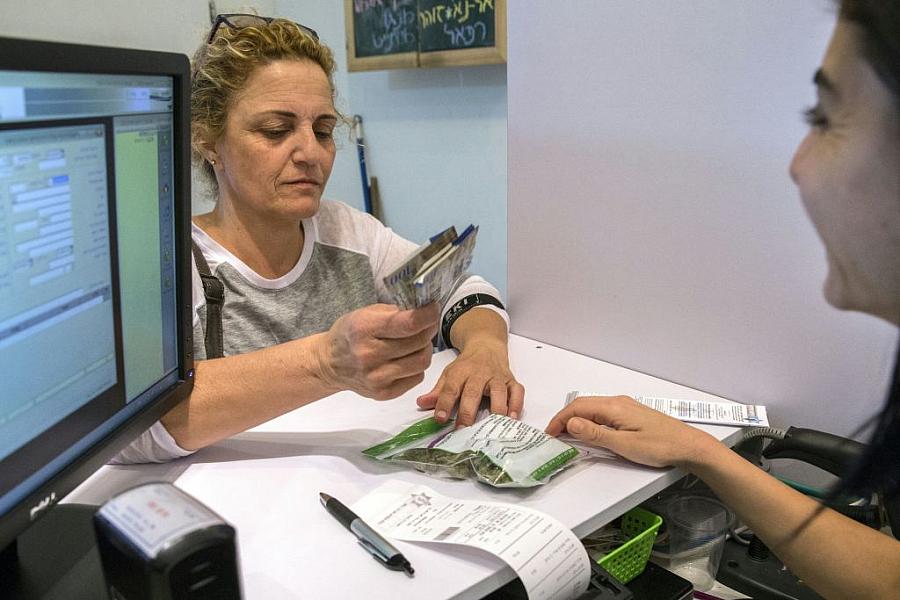When medical marijuana is legal but not equal

(Photo by Jack Guez/AFP via Getty Images)
When New York state legalized medical marijuana in 2016, the Montefiore Medical Center in the Bronx was an early adopter. Doctors at Montefiore saw expanding medical marijuana access as a way to reduce the Bronx’ high rate of opioid addiction, and they now treat about 3,000 patients a year through their medical marijuana center. Many of those patients are being treated for chronic pain, but also for seizure disorders, PTSD, diabetes, orthopedic problems, and more.
But Montefiore’s patients are also overwhelmingly living in poverty, with many depending on Medicaid or Medicare. The hospital’s medical marijuana center makes it possible for patients to register for and receive a medical marijuana card for free, but the cost of marijuana itself is not covered by healthcare. A 30 mL bottle of tincture in New York City can be $50 to $75, and capsules or pills can cost $3 each. Unlike opioids, medical marijuana is not covered by health insurance, and that regular out-of-pocket cost can be a dealbreaker for many low-income patients.
Dr. Julia Arnsten, chief of the General Internal Medicine Division at Montefiore and the creator of the medical marijuana center, said she estimates that only about a quarter of the patients the center has certified for medical marijuana purchase marijuana more than once. When asked why many of them didn’t purchase again, many patients said the same thing: They couldn’t afford it.
Medical marijuana has been legalized in 37 states, the District of Columbia, and a handful of U.S. territories. Access, however, is not the same for everyone.
Because the federal government still considers cannabis a Schedule I drug — the same category on the Controlled Substances Act as heroin — it is not covered by any health insurance, including VA health benefits, Medicaid, Medicare and private insurance. Medical marijuana typically costs hundreds of dollars per month — with some patients reporting they spend more than $1,000 per month. The federal poverty line for an individual is an annual income of $12,760. If a patient’s medical marijuana costs just $300 per month, that’s $3,600 a year — almost one third of their annual income. For many, affording medical marijuana can be an insurmountable cost.
“When you look at the industry in general, it's almost being built for rich white people,” said Debbie Churgai, the executive director of the patient advocacy organization Americans for Safe Access. “And we're forgetting about everyone else.”
People around America with PTSD, chronic pain, autism, Parkinson’s, multiple sclerosis, ALS, seizure disorders and more use marijuana to mitigate the symptoms of or treat the disease itself. The efficacy of and evidence for treating many of these diseases with marijuana is still inconclusive in many cases, because the plant’s federal illegality makes researching it difficult for scientists. But approximately 10% of Americans still use medical marijuana, and doctors around America are increasingly recommending it. Patients with terminal cancer use cannabis to engage more fully in the last few months of life. Veterans with PTSD use cannabis to function successfully as they reenter society. And there are children with severe seizure or epilepsy disorders whose lives have been prolonged years beyond what doctors predicted due to medical marijuana.
But the people with the best access to medical marijuana are often wealthy and white. Because cannabis is federally illegal, low-income patients, those relying on federal health care programs, housing or education, and people in rural areas are often left struggling to access the system.
Some families have moved to another state in order to find medical marijuana products for their children or for themselves, but that’s an impossible ask for families living paycheck to paycheck.
The reasons for this are as simple as they are complex, and highlight how people of color, rural Americans, and veterans are often forced by the American health system to choose the cheapest option, rather than the best option for their health.
Much of the conversation around cannabis for the last decade has centered around inequalities in the criminal penalties for marijuana possession and sale have been unequally levied on communities of color. But the conversation over inequity and unequal access to medical marijuana has often been overlooked. I hope with 2022 National Fellowship to shine a spotlight on this undercovered area of cannabis policy and of the American health system.
